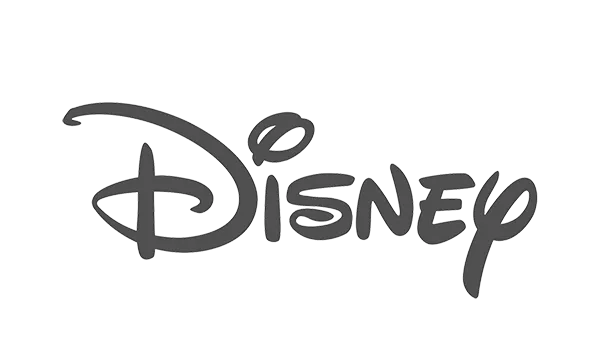The 2025 recruitment landscape requires HR and talent acquisition professionals to adapt to several ongoing trends. These include the lingering effects of corporate layoffs, the growing influence of AI in recruitment, and the continued impact of quiet quitting.
As you plan your talent acquisition strategies for the coming year, these key recruiting trends will come in handy.
Recruiting Trend #1. Advertised Salary Ranges on Job Postings
Many job seekers (47%) want to know salary details upfront, so the impact of the pay transparency laws on recruiting in 2025 is expected to be of great interest to job seekers and recruiters alike.
Although some companies may see a reduction in the number of applicants to a new role, those in the hiring pipeline should be less likely to drop out due to compensation concerns. Higher pass-through rates could be a huge win for recruiting teams as they seek to lower time-to-hire. Greater transparency around pay and benefits offered also benefits candidate experience and, by extension, employer brand.

Recruiting Trend #2. Reliance on People Data
Another likely trend in 2025 will be the increased use of HR analytics and people analytics tools. As HR functions reflect on the overhiring that characterized the past few years—a significant factor contributing to recent layoffs—they are likely to adopt these tools and form specialized teams to enhance decision-making processes.
Dan George, a seasoned leader in people analytics with nearly two decades of experience, has witnessed these shifts firsthand. After building a career centered around large systems implementation, Dan has now taken on the role of founder and CEO of Piper Key, a management consulting firm dedicated to helping companies optimize their workforce, technology, and planning strategies.
Recently, we had the opportunity to speak with Dan about his extensive experience in people analytics. He shared his insights into the industry's evolving landscape and offered valuable advice for companies looking to initiate their own people analytics efforts. Below, you'll find the recording of the conversation.
Requisition prioritization for net-new roles and backfill requests will likely come under more scrutiny as CFOs work to manage headcount costs against revenue forecasts. Organizations that develop a long-term, data-driven recruiting plan aligned with their headcount strategy should outperform their peers in the coming year as proactive recruiters fill critical roles faster with less overhead.
Read More: How to Be Great at Leveraging People Analytics?
Recruiting Trend #3. Skill-Based Hiring is Gaining More Ground
Recent studies on recruitment have revealed an interesting trend in the job market: only 41% of job seekers view a college degree as essential. This shift in perspective highlights an opportunity for employers to rethink their hiring strategies. In fact, companies offering positions with salaries around $60,000 stand to benefit significantly by adopting a skills-based hiring approach. Research indicates that such an approach could save employers between $7,800 and $22,500 while also reducing the risks associated with hiring mistakes.
This data strongly suggests that prioritizing skills-based recruiting could be a strategic advantage for employers heading into 2025. As Jeremy Friedman, CEO of HireVue, points out, “Skills-based hiring is multiple orders of magnitude more predictive for success than past indicators.”
Recruiting Trend #4. Contingent Workforce Uptake
With all of these changes and continued economic uncertainty, organizations may also start to leverage more contract and part-time positions to fill short-term needs without committing to full-time hiring overheads.
This could be a huge win/win as companies can be more surgical in solving their needs with great talent while employees have more options for managing their working schedules and employee experience. With layoffs overwhelmingly affecting recruiting teams, contingent work is a model that has been popular for some time and may be used more frequently in 2025.
Naturally, some automation or software support, such as a freelance management system, is beneficial in this type of workforce management.
Recruiting Trend #5. The Rise of Talent Intelligence
The application of AI in talent acquisition, also known as Talent Intelligence, is one of the most recent advancements in HR technology. Talent Intelligence integrated into recruiting tools is designed to help organizations identify and recruit top talent by providing them with data-driven insights and recommendations. Many include the ability to:
- Search and filter internal and external candidate data in order to find qualified prospects for new roles, including existing employers for internal mobility opportunities.
- Track and analyze recruitment metrics more effectively in order to find, fix, and improve time, cost, and quality of hire.
- Set up automation to streamline various aspects of the hiring process. This increases recruiting capacity and allows more roles to be filled with less headcount.
Other features may include artificial intelligence for sourcing, resume parsing, candidate matching, and integration with job boards and other recruitment platforms to support the recruiting team.
Considering that nearly half of HR leaders trust AI can identify skill gaps and suggest talent development strategies and plans to improve retention, the adoption of AI ATS and recruiting automation platforms is expected to grow significantly in the coming years.
Recruiting Trend #6. A Greater Demand for Onboarding Tools
Another standout technology is improved onboarding capabilities, which help companies integrate new employees into a remote or hybrid work environment.
To create a consistent experience, companies can now use templated workflows (hosted in onboarding software) to assign orientation sessions, training, and introductions to the company's policies and procedures. Many platforms also connect new employees with key colleagues, and a mentor or buddy to help them acclimate to their new role, company culture, and work environment.
Recruiting Trend #7. A Growing Adoption of Pre-Employment Assessments
As the demand for international hires increases and we potentially shift back towards inbound recruiting, the use of talent assessment tools is likely to rise. These tools, which evaluate job candidates prior to hiring, can include traditional methods such as written tests and personality assessments, as well as modern approaches like job simulations. These simulations efficiently evaluate a candidate's ability to perform the role, regardless of their location.
Qualities of Effective Recruiters
As HR professionals look to rebuild recruiting capacity in 2025 after hiring freezes and layoffs, they should shift their focus away from ‘coin-operated’ recruiting and seek recruiters who can be true business partners.
Rather than focusing on how many roles a recruiter can fill each month, consideration should fall on how the recruiting strategy benefits the company. Companies should prioritize recruiters who possess the following HR skills:
- Ability to effectively communicate with both candidates and hiring managers in order to identify the right competencies and person fit for open positions.
- Strong organizational skills to effectively manage their time and prioritize tasks in order to effectively handle high-volume hiring.
- Strong problem-solving skills to quickly and effectively solve problems that arise during the full-cycle hiring process.
- Strong relationship-building skills to build strong relationships with both candidates and hiring managers with a special focus on establishing trust and rapport.
- Knowledge of industry and HR tech trends to understand and adapt to conditions that may impact the hiring process.
























